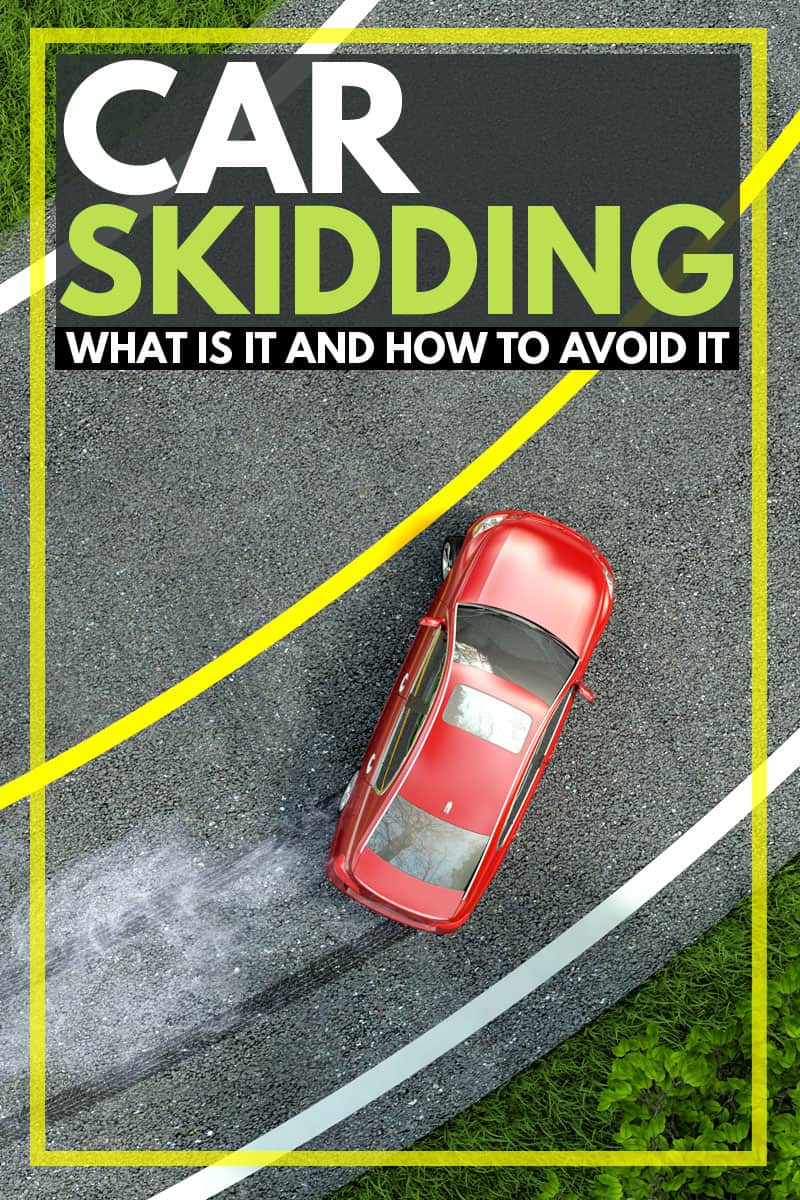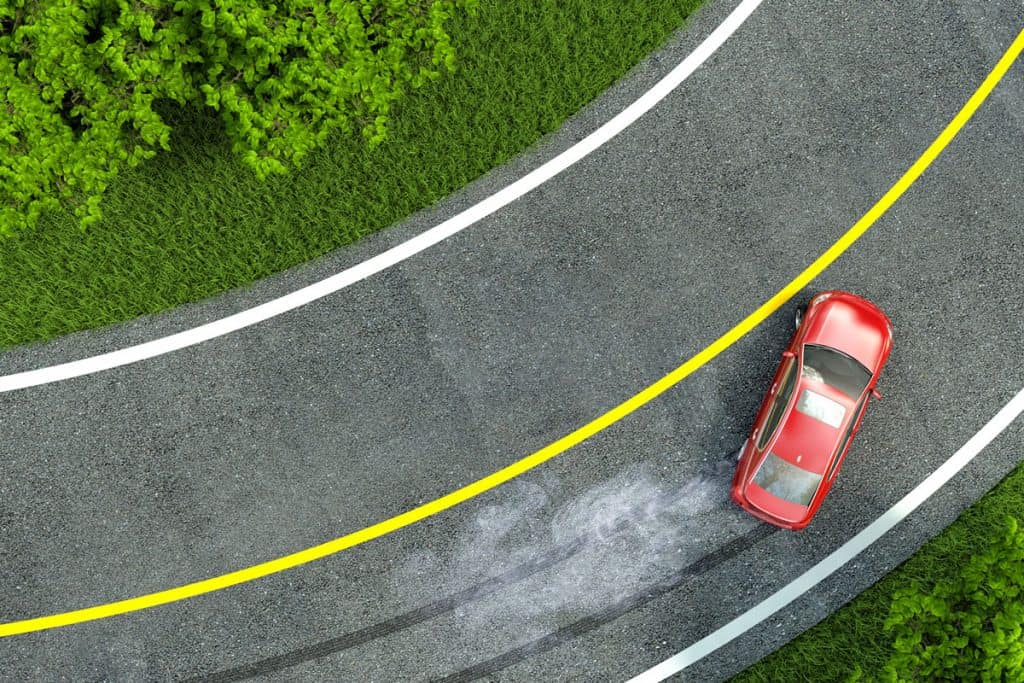 Driving a car gives us a real sense of freedom on the open road. For the most part, we get in our cars and never think about how to drive, we just drive. But road conditions can change quickly during a rainstorm or snowstorm. Traffic can back up suddenly on a highway causing you to slam on the brakes. Reacting hastily might send your car skidding. If you are wondering what skidding means and how you can avoid it, keep reading.
Driving a car gives us a real sense of freedom on the open road. For the most part, we get in our cars and never think about how to drive, we just drive. But road conditions can change quickly during a rainstorm or snowstorm. Traffic can back up suddenly on a highway causing you to slam on the brakes. Reacting hastily might send your car skidding. If you are wondering what skidding means and how you can avoid it, keep reading.
A skid is a vehicle condition that occurs when tires slip or lose their grip on the road. The overall handling of the vehicle is impacted and the driver loses control over the direction in which the car moves. Types of car skid by causes include -
- Braking
- Acceleration (power skidding)
- Cornering
- Tire Blowout
- Wet road
- Snow & Ice Conditions
It’s a scary feeling when your car starts to spin out of control. Read on as we provide some guidance on what to do when your car starts to skid. We'll also explain what causes your car to skid and how you can prevent sliding all over the road.
[toc]
What Is Skidding In Driving?
When a car skids, it is sliding or slipping because the tires are not gripping the road. A skid can occur when one or more tires slip. How the car reacts depends on the circumstances that caused the car to skid in the first place. Road conditions combined with your driving speed or the amount of power being supplied to your tires can cause a skid. For example, if you are driving on a slippery road and you brake too hard, your wheels will lock up and send your car into a skid.
Driving errors can send your car into a sideways slide. These errors include:
- Driving too fast for the road conditions
- Turning your wheels too sharply
- Braking too hard and locking up the wheels.
- Braking while turning
- Oversteering causing wheels to turn sharply
- Supplying too much power to the wheels by overaccelerating.
Any of these errors can cause you to lose control of your car. To avoid a skid, remember to watch your speed and be aware of changing road conditions.
Types of Skidding

We’ve defined skidding and we’ve listed common driving errors that can cause your car to slide. No matter what is causing your car to slide, it’s a smart idea to understand the types of skidding that can occur.
As follows are causes of skidding:
Braking
Over braking or braking while turning can lock up the wheels and tires. Locked up wheels reduce your car's ability to grab the road. When this happens, it’s usually your back tires that cause your car to slide sideways as they try to get back into synch with the front tires. This type of skid is common when roads are slick with water or ice. Your tires need friction to function properly.
Power
Too much acceleration will cause your car to skid. Tires and wheels need traction. When too much power is sent to the wheels, wheelspin occurs because as the wheel rotates, there isn’t any grip on the road.
Cornering
This type of skid occurs when a driver loses control of the steering while turning. This can happen if you overcompensate and steer too hard in a turn or on a curve. The car’s tires lose traction in the turn and this causes the vehicle to slide. Cornering is also known as a steering skid.
Blowout
When a tire suddenly loses air pressure while you are driving it can burst. A blowout can occur if a tire is overinflated and gets too hot while driving. Tires can also get punctured if they are hit by an object on the road. In any case, that rapid loss of air pressure will pull your car into a slide to the left or right depending upon which tire exploded.
Skidding Due to Rain
Driving conditions during rainfall deteriorate rapidly. If your car’s tires meet too much water, traction is lost, and a thin layer of water lifts your car off the road causing it to hydroplane. Your car will move forward but you won’t be able to steer or brake. Hydroplaning is a worst-case scenario, but it can happen fast in heavy rain. Over braking or too much speed on a slick surface means the tires don’t get the friction they need, and your car will skid.
Snow & Ice Conditions
Like rain, snow and ice create a slippery road. Your tires need traction to the road. Any loss of friction will cause a skid. Braking or excessive speed on slick surfaces compounds the loss of traction and you will lose control of your car. You should also be aware of black ice. This type of ice is difficult to see. It forms in cold temperatures below 40 degrees, and in shaded areas.
In almost all scenarios, skidding is caused by speed and road conditions. To stay safe, be mindful of your surroundings and lightly adjust your speed as needed.
What Is The Most Common Cause Of Skidding In A Car?
When your tires lose friction with the road your car will skid. The most common reason for a car to skid or slide is too much power or speed. The rubber literally needs to meet the road. Combine excessive speed with rain, snow or ice and the chance of you losing control of your car dramatically improves.
Drive at a comfortable speed and make adjustments as needed.
How To Regain Control Over Your Car When Skidding?
First and foremost, keep your hands on the wheel at all times. You should also remove your foot from the gas pedal immediately to reduce the car's speed. And try not to apply the brakes. While your car is skidding one of the most important pieces of advice to follow is: don’t over-brake. In fact, take your foot off the brake altogether. If you need to use the brakes, use them gently until you regain control of your vehicle
Regaining control of your car while skidding depends on the type of slide you are experiencing. We have listed advice below based on which wheels are skidding.
Rear-Wheel skid
Also known as fishtailing, a rear-wheel skid pushes the car back and forth in a side to side motion. If your rear wheels have lost traction, gently steer your car in the direction you want to go. Keep steering your car until you regain control. If you oversteer or try to overcorrect, your car will continue to slide. Once all your tires are engaged and you can sense the car straightening, slowing depress the gas pedal for power.
Front-Wheel Skid
Going into a curve or sharp turn too fast can cause your front wheels to skid. Control over your steering might be lost completely. It will certainly feel like you have lost the ability to steer. The first thing you should do is take your foot off the accelerator. As speed reduces, the weight will shift to the front wheels, creating traction for the tires. If you need to use the brakes, gently depress the pedal to slow down. You don’t want to brake too hard and cause the wheels to lock. Once you regain full control of steering, straighten out the car and gradually increase your speed.
Another helpful tip to keep in mind is to look where you want to go. Keep your eyes on the road, hands on the wheel and don’t get distracted by looking where you don’t want to go.
How To Control A Skid In An Automatic Car
Cars with manual transmissions have a clutch that controls the power to the wheels. Skidding can be controlled by depressing the clutch in a manual car. But automatic cars don’t have a clutch. The only way to decrease power or speed is by braking. When your automatic car goes into a skid, keep calm and keep your eyes on the road. Take your foot off the gas pedal and steer the car to where you want it to go. As the wheels and tires start to regain traction, your car will straighten as it comes out of the skid. You might need to lightly depress the brake pedal to reduce your speed.
How To Avoid Skidding
Losing control of your car can put you in a panic. It’s best to never get in that situation but we know it happens to even the best of drivers. There are ways, though, that you can avoid skidding altogether.
Here are some tips to follow:
Be Aware Of Your Speed
Driving too fast is one of the most common reasons your car will skid. And, when conditions on the road change with ice or rain, you need to drive slower.
When turning or driving on a curvy road, be mindful of how fast you are driving. The faster you go, the less traction your tires have as you turn the car. Weight and power won’t always shift evenly at a higher speed.
Keep Your Distance
Give the other drivers and yourself some space. If you are trailing the car in front of you too closely, you are increasing the likelihood of a sudden stop. Slamming the brakes can cause skidding.
Slippery When Wet
If it’s raining or snowing or if the roads are just wet, slow down. Slippery surfaces greatly reduce your tire’s grip on the road.
Gentle brakes Please
Never over brake, always brake gently. Mashing the brakes will cause your car to slide.
Keep your car maintained
Have your tires and wheels checked out on a regular basis. Any wear on tire treads means they will have less contact with the road. Underinflated tires can't grab the road as well as tires that are properly inflated. And, an overinflated tire can heat up and be subject to a blowout.
If you feel your car start to slide, immediately remove your foot off the gas pedal. Reducing speed might prevent skidding.
Can Skidding Damage Your Car
Skidding doesn’t necessarily damage your car. But it does add to the overall wear and tear of your vehicle. We’ve said that driving too fast or braking too hard can cause your car to slide. These habits also contribute to added stress on your car’s engine. And, skidding also impacts your tire’s tread. Less tread means less traction and those tires will need to be replaced sooner.
If you are unable to regain control of your car in a skid, you might crash into a tree, a guardrail or another car. This will most certainly damage your car and maybe someone else’s car too.
Keep Your Eyes On The Road
We hope that you never find yourself losing control of your car. Skidding or sliding is unnerving. This post was meant to help you understand what it means for your car to skid and more importantly what to do when your car slides out of your control. Hopefully you've picked up a tip or two. Keep your eyes on the road, hands on the wheel and slow down. Safe driving!
